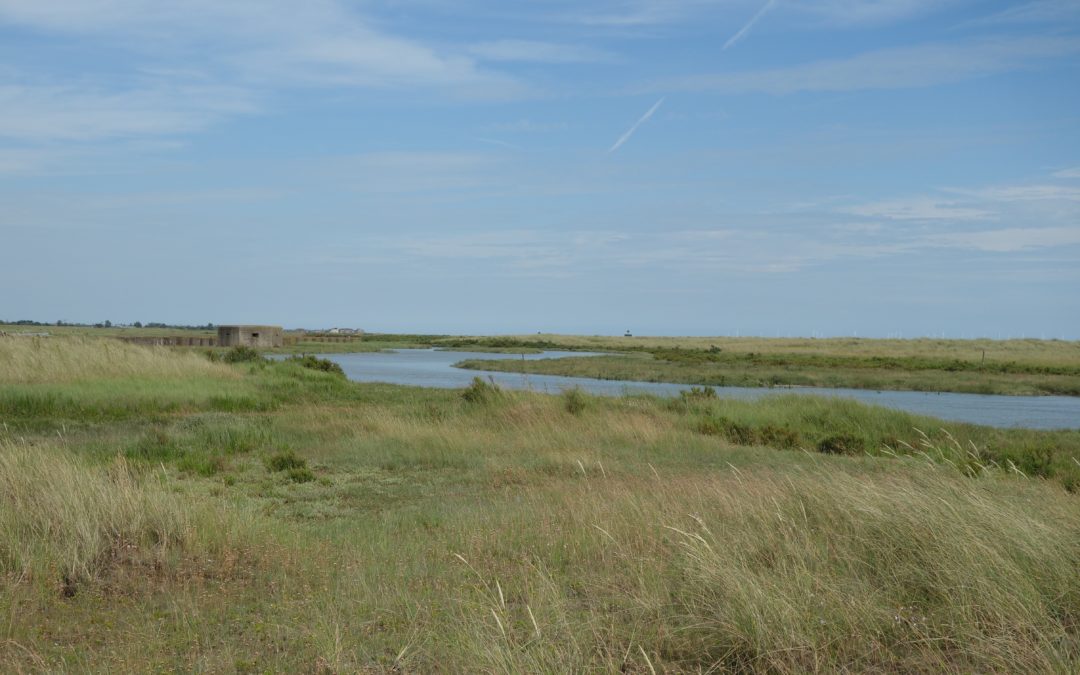Edited by Christopher Thornton, the latest Red Book publication in the Victoria County History (VCH) series for the county of Essex is the first part of volume XII, St Osyth to the Naze: North-East Essex Coastal Parishes, now available from Boydell & Brewer. Part I of this volume covers St Osyth, Great and Little Clacton, Frinton, Great Holland and Little Holland.
The book introduces some places that you might have heard of – Clacton, Frinton and St Osyth – but not the histories you may think you know. The previous volume, XI, Clacton, Walton and Frinton: North-East Essex Seaside Resorts, described the development of the seaside resorts of north east Essex, from Jaywick to Walton-on-the-Naze, in the 19th and 20th centuries. This book details the earlier history of the parishes developed to serve the seaside economy, this part including St Osyth, Great and Little Clacton, Great and Little Holland and the tiny parish of Frinton. The second part of this volume will explore Thorpe-le-Soken, Kirby-le-Soken and Walton-le-Soken.
The nine Essex parishes lying in a coastal district between St Osyth and the Naze headland at Walton encompass a number of distinct landscapes, from sandy cliffs to saltmarsh. The landscape has changed in response to fluctuating sea levels, flooding, draining and investment in sea defences. Inland, there was an agriculturally fertile plateau based on London Clay. The coastal area has produced significant evidence of early human activity – the Clactonian Culture of the early Palaeolithic relied on local flint for the production of tools – and the area was heavily exploited and settled in prehistory.

Most land was held by St Paul’s Cathedral from the mid-10th century. About 1118–19 a bishop of London founded a house of Augustinian canons at St Osyth, which became one of the wealthiest abbeys in Essex. Most other manors in the district were small and their tenants were of little more than local significance. After the Reformation all of the former church lands in the area were granted to the royal servant, Thomas Darcy, 1st baron Darcy of Chiche (d. 1558). Darcy built a great mansion, St Osyth Priory, on the site of the former abbey reusing some of its magnificent early sixteenth century buildings, which became the centre of his new estate.
The area’s economy was strongly affected by the coast and its many valuable natural resources, including the extraction of sand, gravel, septaria and copperas used in ink. These were supplemented by wrecking and smuggling as well as the production of salt. It remained a largely rural district and its wealth depended upon the state of farming. Until the eighteenth century it specialised in dairying from both sheep and cattle, but afterwards production shifted towards grain.
Medieval settlement largely conformed to a typical Essex model, with a complex pattern of small villages, hamlets and dispersed farms, many located around greens or commons. The largest settlement was the small town at St Osyth, located outside the abbey gates, which had a market and wool fair in the Middle Ages. In the sixteenth century, the area was a focus for the persecution of supposed witches, remembered in folklore even in the twenty-first century.

In the nineteenth and twentieth centuries the coast witnessed the development of seaside resorts at Walton, Clacton and Frinton. Some overspill affected the surrounding more rural parishes, and from the 1920s new types of resort developed in the form of seaside camps, plotlands, chalets and caravan parks. The transformations of the area are perhaps best exemplified by Jaywick, once a medieval dairy farm on the saltmarsh fringes of Great Clacton described in volume XII, to the holiday bungalows, now permanently inhabited, detailed in volume XI.
A History of the County of Essex XII: St Osyth to the Naze: North-East Essex Coastal Parishes. Part 1: St Osyth, Great and Little Clacton, Frinton, Great Holland and Little Holland, is available to purchase from Boydell & Brewer. For a 35% discount until 31 December 2020, enter the code BB883 at the checkout.
For more information on the VCH Essex project visit our webpages or follow the VCH on Twitter.

